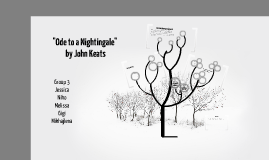



In the summer of 1803, John was sent to board at John Clarke's school in Enfield, close to his grandparents' house. His parents wished to send their sons to Eton or Harrow, but the family decided they could not afford the fees. Life mask of Keats by Benjamin Haydon, 1816 Keats was baptised at St Botolph-without-Bishopsgate, and sent to a local dame school as a child. The Globe pub now occupies the site (2012), a few yards from modern Moorgate station. Keats believed he was born at the inn, a birthplace of humble origins, but there is no evidence to support this. His father first worked as a ostler at the stables attached to the Swan and Hoop Inn owned by his father-in-law, John Jennings, an establishment he later managed, and where the growing family lived for some years. He was the eldest of four surviving children his younger siblings were George (1797–1841), Thomas (1799–1818), and Frances Mary "Fanny" (1803–1889), who later married the Spanish author Valentín Llanos Gutiérrez. Although Keats and his family seem to have marked his birthday on 29 October, baptism records give the date as the 31st. There is little evidence of his exact birthplace. John Keats was born in Moorgate, London, on 31 October 1795, to Thomas and Frances Keats (née Jennings). Today his poems and letters remain among the most popular and analysed in English literature – in particular " Ode to a Nightingale", " Ode on a Grecian Urn", " Sleep and Poetry" and the sonnet " On First Looking into Chapman's Homer".Įarly life and education, 1795–1810 Typically of the Romantics, he accentuated extreme emotion through natural imagery. Keats had a style "heavily loaded with sensualities", notably in the series of odes. Jorge Luis Borges named his first time reading Keats an experience he felt all his life. By the end of the century, he was placed in the canon of English literature, strongly influencing many writers of the Pre-Raphaelite Brotherhood the Encyclopædia Britannica of 1888 called one ode "one of the final masterpieces". They were indifferently received in his lifetime, but his fame grew rapidly after his death. His poems had been in publication for less than four years when he died of tuberculosis at the age of 25. John Keats (31 October 1795 – 23 February 1821) was an English poet of the second generation of Romantic poets, along with Lord Byron and Percy Bysshe Shelley.

Posthumous portrait of Keats by William Hilton, National Portrait Gallery, London (c.


 0 kommentar(er)
0 kommentar(er)
